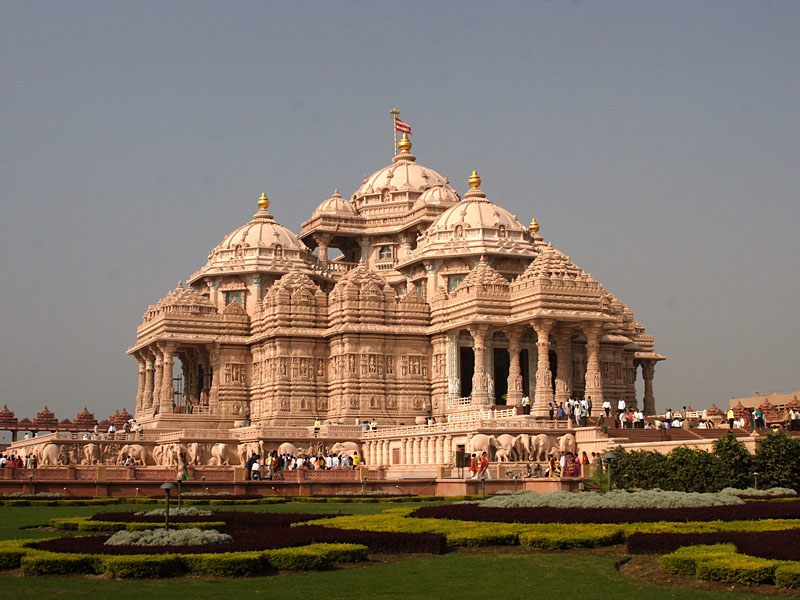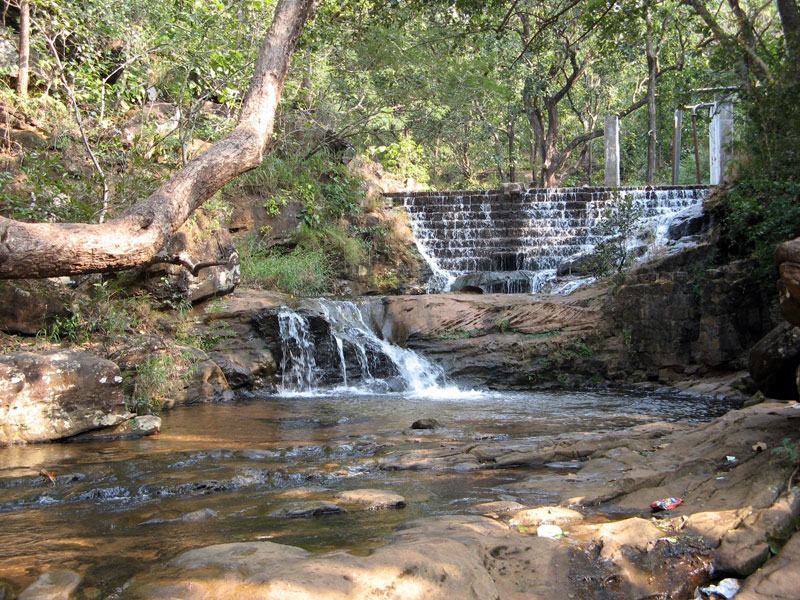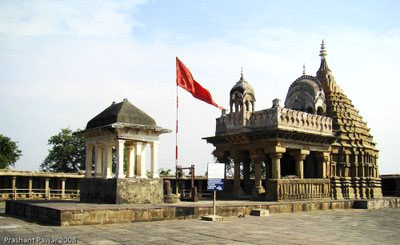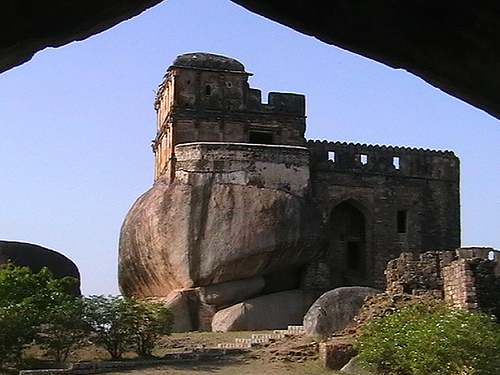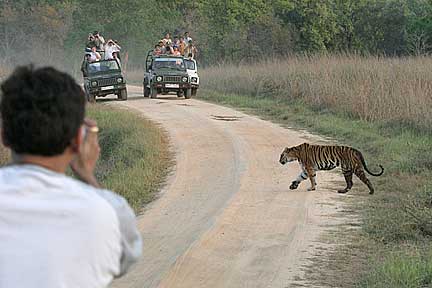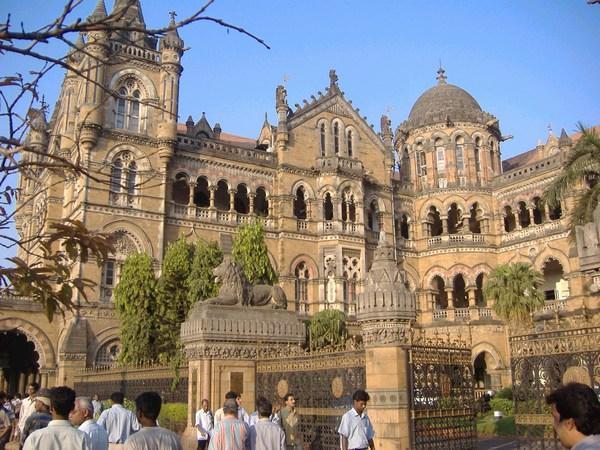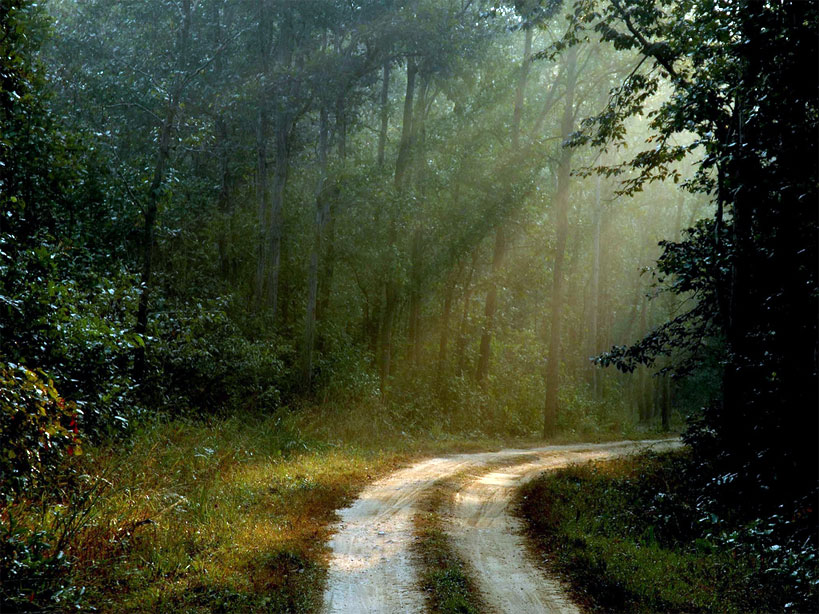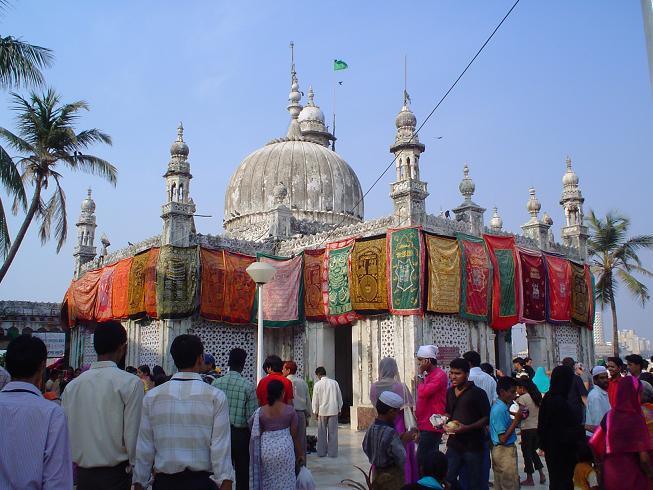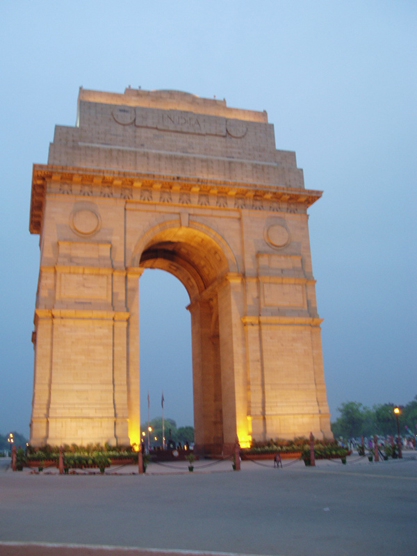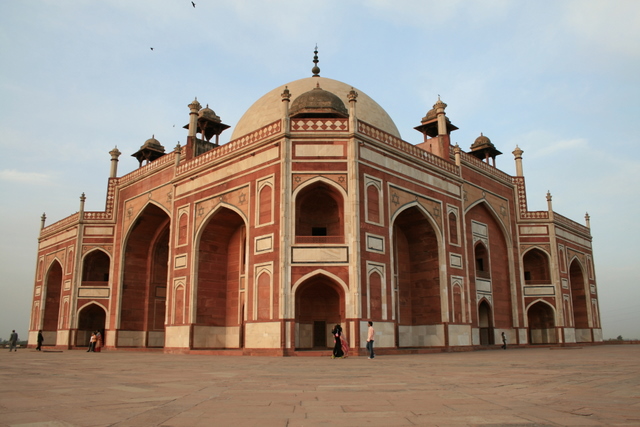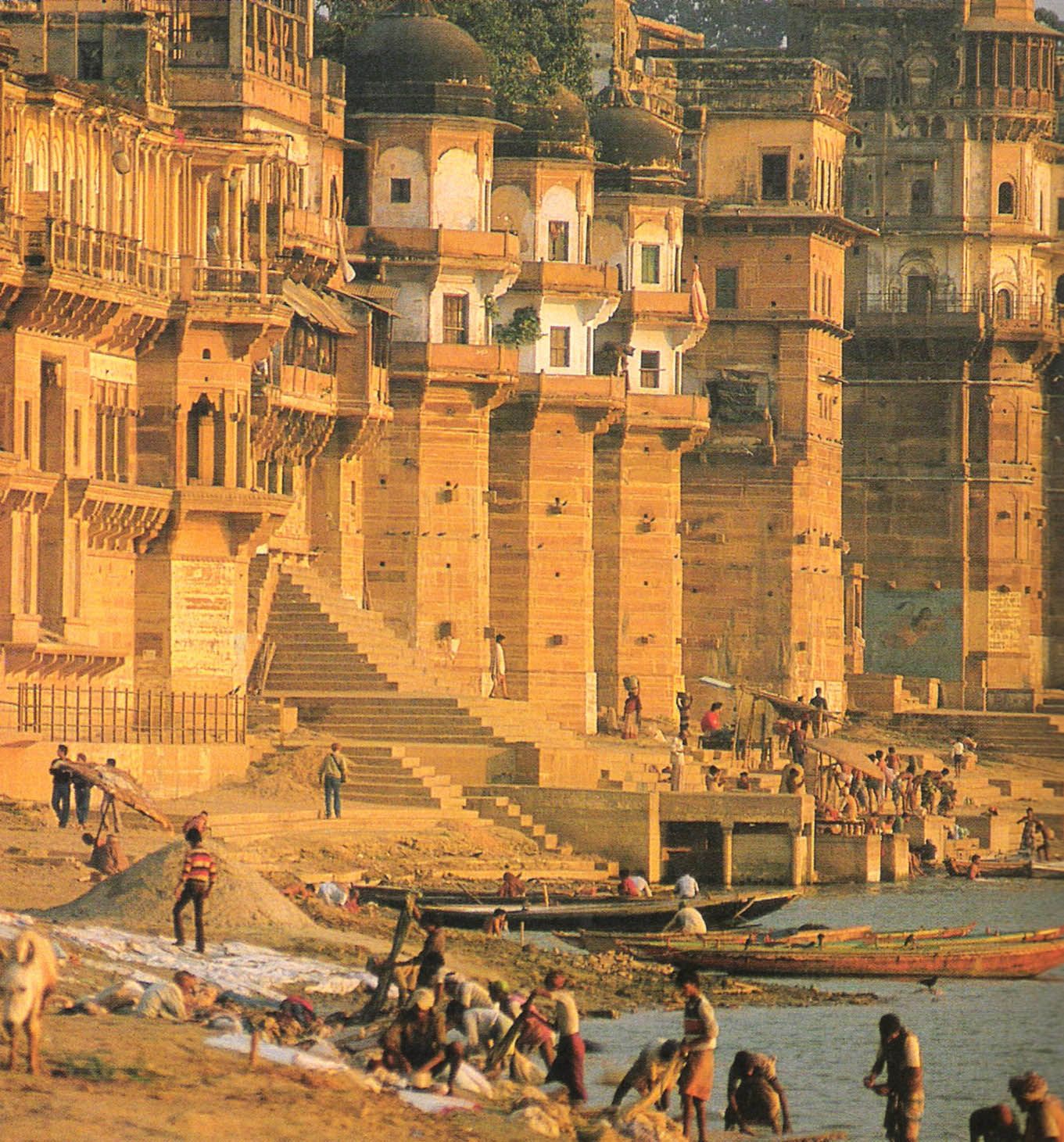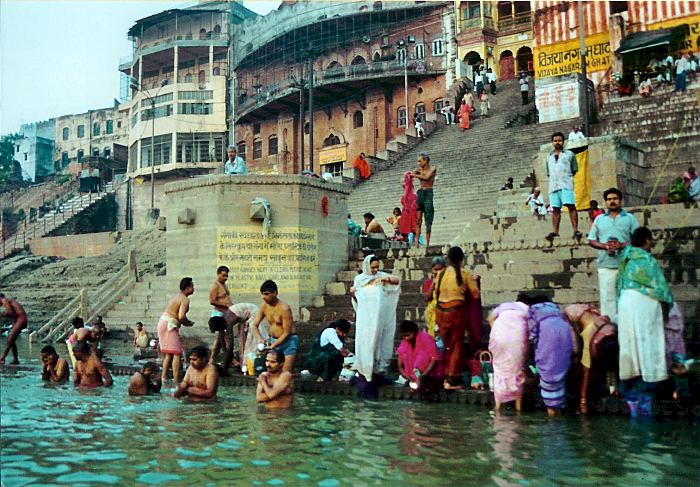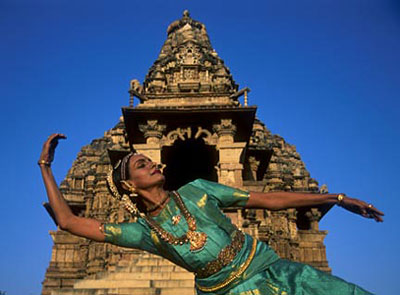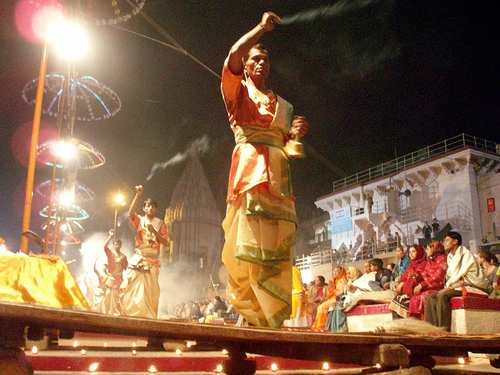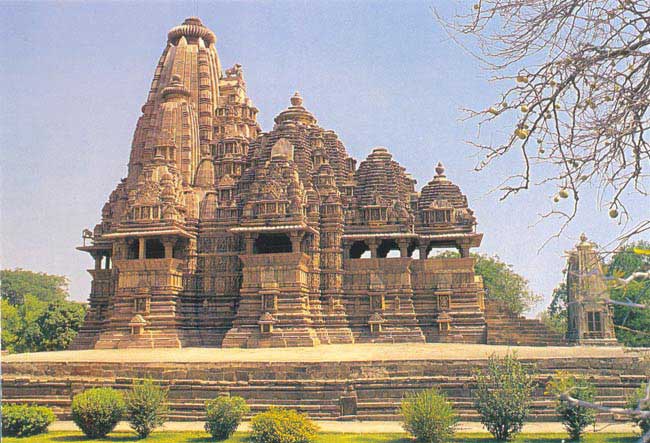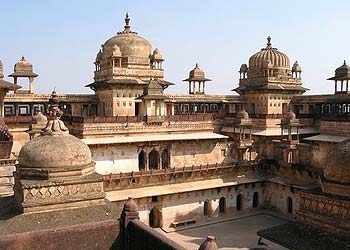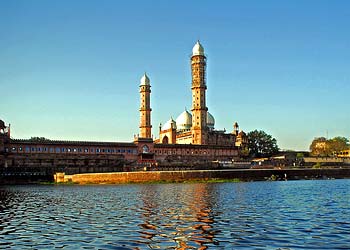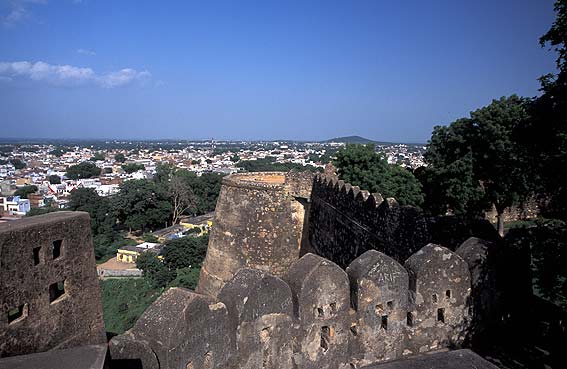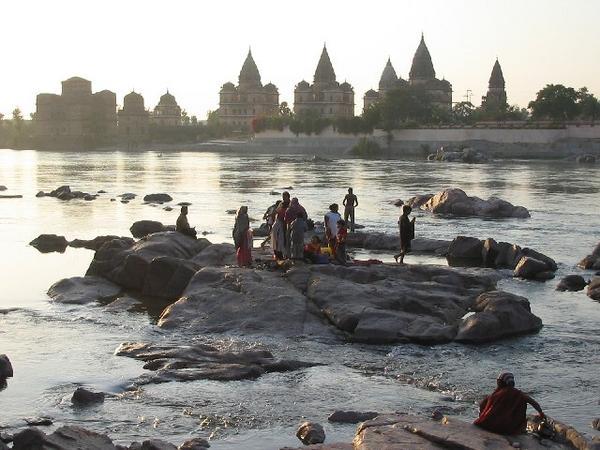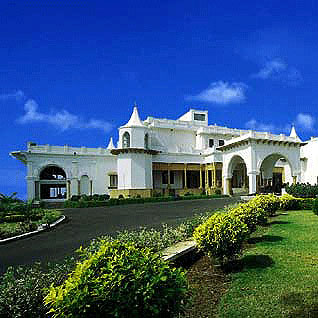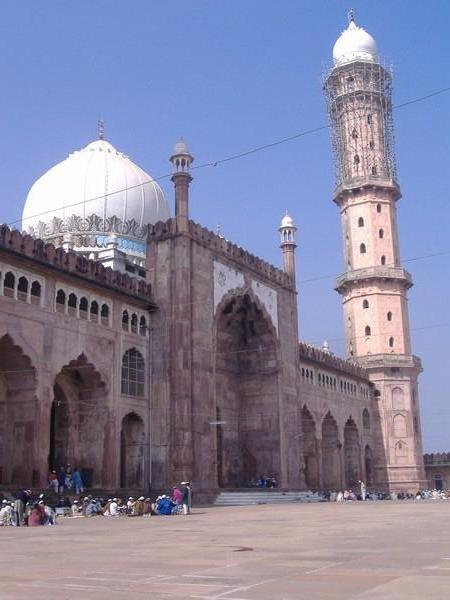Central India Classic and Tiger
Delhi-Varanasi-Khajuraho-Orchha-Jhansi-Bhopal-Pachmarhi-Jabalpur-Kanha-Nagpur-Mumbai
Day 1: Delhi
 On arrival at Delhi International airport, our representative will receive and transfer to the hotel.Overnight stay at hotel.
On arrival at Delhi International airport, our representative will receive and transfer to the hotel.Overnight stay at hotel.
Day 2: Delhi
 Leave for a post breakfast full day sightseeing tour covering the major attractions of Old and New Delhi. Start with a visit to <a class="PIInfosoft-placeName" onclick="openAttractionDescriptionPopup('en', 'RGH','DEL','IND','India');" data-target="#PopUp5" href="javascript:void(0)" data-toggle="modal">Raj Ghat</a>, the cremation site of Mahatma Gandhi, Jama Masjid, India-s largest mosque and the striking <a class="PIInfosoft-placeName" onclick="openAttractionDescriptionPopup('en', 'A7J','DEL','IND','India');" data-target="#PopUp5" href="javascript:void(0)" data-toggle="modal">Red Fort</a>. Later, proceed to New Delhi and visit its majestic ancient monuments like <a class="PIInfosoft-placeName" onclick="openAttractionDescriptionPopup('en', 'A7L','DEL','IND','India');" data-target="#PopUp5" href="javascript:void(0)" data-toggle="modal">Humayun's Tomb</a>, <a class="PIInfosoft-placeName" onclick="openAttractionDescriptionPopup('en', 'A7K','DEL','IND','India');" data-target="#PopUp5" href="javascript:void(0)" data-toggle="modal">Qutub Minar</a> and also take a memorable drive past Rajpath, <a class="PIInfosoft-placeName" onclick="openAttractionDescriptionPopup('en', 'A7M','DEL','IND','India');" data-target="#PopUp5" href="javascript:void(0)" data-toggle="modal">India Gate</a>, <a class="PIInfosoft-placeName" onclick="openAttractionDescriptionPopup('en', 'PTH','DEL','IND','India');" data-target="#PopUp5" href="javascript:void(0)" data-toggle="modal">Parliament House</a>, Rashtrapati Bhavan. Overnight stay at hotel.
Leave for a post breakfast full day sightseeing tour covering the major attractions of Old and New Delhi. Start with a visit to <a class="PIInfosoft-placeName" onclick="openAttractionDescriptionPopup('en', 'RGH','DEL','IND','India');" data-target="#PopUp5" href="javascript:void(0)" data-toggle="modal">Raj Ghat</a>, the cremation site of Mahatma Gandhi, Jama Masjid, India-s largest mosque and the striking <a class="PIInfosoft-placeName" onclick="openAttractionDescriptionPopup('en', 'A7J','DEL','IND','India');" data-target="#PopUp5" href="javascript:void(0)" data-toggle="modal">Red Fort</a>. Later, proceed to New Delhi and visit its majestic ancient monuments like <a class="PIInfosoft-placeName" onclick="openAttractionDescriptionPopup('en', 'A7L','DEL','IND','India');" data-target="#PopUp5" href="javascript:void(0)" data-toggle="modal">Humayun's Tomb</a>, <a class="PIInfosoft-placeName" onclick="openAttractionDescriptionPopup('en', 'A7K','DEL','IND','India');" data-target="#PopUp5" href="javascript:void(0)" data-toggle="modal">Qutub Minar</a> and also take a memorable drive past Rajpath, <a class="PIInfosoft-placeName" onclick="openAttractionDescriptionPopup('en', 'A7M','DEL','IND','India');" data-target="#PopUp5" href="javascript:void(0)" data-toggle="modal">India Gate</a>, <a class="PIInfosoft-placeName" onclick="openAttractionDescriptionPopup('en', 'PTH','DEL','IND','India');" data-target="#PopUp5" href="javascript:void(0)" data-toggle="modal">Parliament House</a>, Rashtrapati Bhavan. Overnight stay at hotel.
 Morning after breakfast transfer to airport to board flight to Varanasi. Upon arrival, proceed for a short sightseeing tour to Sarnath.Check-in at the hotel.Later in the evening, watch the magnificent Aarti ceremony and overnight stay at hotel.
Morning after breakfast transfer to airport to board flight to Varanasi. Upon arrival, proceed for a short sightseeing tour to Sarnath.Check-in at the hotel.Later in the evening, watch the magnificent Aarti ceremony and overnight stay at hotel.
Day 4: Varanasi
 Today, we take you on an exciting boat ride along the River Ganga early in the morning. Return to the hotel for breakfast and then proceed for a city sightseeing tour. Relax at leisure at noon and stay for the night at the hotel.
Today, we take you on an exciting boat ride along the River Ganga early in the morning. Return to the hotel for breakfast and then proceed for a city sightseeing tour. Relax at leisure at noon and stay for the night at the hotel.
Day 5: Varanasi
 The Temple City of Khajuraho is the next destination in your tour package for Madhya Pradesh. Check out from hotel after breakfast and proceed to the airport to board flight to Khajuraho. On arrival, our representative welcomes you and escorts you to the hotel. Check in and after a brief rest, leave for a visit to the world-famous erotic temples.The temples are grouped into three geographical divisions: western, eastern and southern.
The Temple City of Khajuraho is the next destination in your tour package for Madhya Pradesh. Check out from hotel after breakfast and proceed to the airport to board flight to Khajuraho. On arrival, our representative welcomes you and escorts you to the hotel. Check in and after a brief rest, leave for a visit to the world-famous erotic temples.The temples are grouped into three geographical divisions: western, eastern and southern.
 Morning, after breakfast, drive to <a class="PIInfosoft-placeName" onclick="openAttractionDescriptionPopup('en', 'AV8','HJR','IND','India');" data-target="#PopUp5" href="javascript:void(0)" data-toggle="modal">Orchha</a>. Upon arrival, check in to hotel and rest for a while. Later, proceed for a city sightseeing tour.On a seasonal island on the bank of the Betwa River, which has been surrounded by a battlement wall, stands a huge palace-fort. The fort consists of several connected buildings erected at different times, the most noteworthy of which are the Rajmandir and the Jahangir Mahal.
Morning, after breakfast, drive to <a class="PIInfosoft-placeName" onclick="openAttractionDescriptionPopup('en', 'AV8','HJR','IND','India');" data-target="#PopUp5" href="javascript:void(0)" data-toggle="modal">Orchha</a>. Upon arrival, check in to hotel and rest for a while. Later, proceed for a city sightseeing tour.On a seasonal island on the bank of the Betwa River, which has been surrounded by a battlement wall, stands a huge palace-fort. The fort consists of several connected buildings erected at different times, the most noteworthy of which are the Rajmandir and the Jahangir Mahal.
Day 7: Khajuraho
 Morning after breakfast transfer to Jhansi railway station to board train to Bhopal. Upon arrival, check in to hotel.Afternoon leave for a city sightseeing tour to Bhopal Bharat Bhawan, Indira Gandhi Rashtriya Manav Sangrahalaya, Laxmi Narayan Temple.Overnight stay at hotel.
Morning after breakfast transfer to Jhansi railway station to board train to Bhopal. Upon arrival, check in to hotel.Afternoon leave for a city sightseeing tour to Bhopal Bharat Bhawan, Indira Gandhi Rashtriya Manav Sangrahalaya, Laxmi Narayan Temple.Overnight stay at hotel.
 After breakfast, leave for a full day excursion tour to the famous Buddhist pilgrimage site of Sanchi and visit its majestic stupas and museums.Sanchi is located 46 km north east of Bhopal, and 10 km from Besnagar and Vidisha in the central part of the state of Madhya Pradesh. It is the location of several Buddhist monuments dating from the third century BCE to the twelfth century CE and is one of the important places of Buddhist pilgrimage. Toranas surround the Stupa and they each represent love, peace, trust, and courage.
After breakfast, leave for a full day excursion tour to the famous Buddhist pilgrimage site of Sanchi and visit its majestic stupas and museums.Sanchi is located 46 km north east of Bhopal, and 10 km from Besnagar and Vidisha in the central part of the state of Madhya Pradesh. It is the location of several Buddhist monuments dating from the third century BCE to the twelfth century CE and is one of the important places of Buddhist pilgrimage. Toranas surround the Stupa and they each represent love, peace, trust, and courage.
Day 9: Orchha
 After breakfast leave for Pachmarhi by surface. Stop midway at the exquisitely carved city of Bhojpur and the ancient caves of Bhimbetka for sightseeing.The Bhimbetka rock shelters (Devanagari: ???????? ????? ?????) are an archaeological World Heritage site located in Raisen District in the Indian state of Madhya Pradesh. The Bhimbetka shelters exhibit the earliest traces of human life in India; a number of analyses suggest that at least some of these shelters were inhabited by man for in excess of 100,000 years. Some of the Stone Age rock paintings found among the Bhimbetka rock shelters are approximately 30,000 years old. Continue drive to Pachmarhi and check-in to the hotel on arrival for overnight stay.
After breakfast leave for Pachmarhi by surface. Stop midway at the exquisitely carved city of Bhojpur and the ancient caves of Bhimbetka for sightseeing.The Bhimbetka rock shelters (Devanagari: ???????? ????? ?????) are an archaeological World Heritage site located in Raisen District in the Indian state of Madhya Pradesh. The Bhimbetka shelters exhibit the earliest traces of human life in India; a number of analyses suggest that at least some of these shelters were inhabited by man for in excess of 100,000 years. Some of the Stone Age rock paintings found among the Bhimbetka rock shelters are approximately 30,000 years old. Continue drive to Pachmarhi and check-in to the hotel on arrival for overnight stay.
 You have the whole day to enjoy the picturesque beauty of misty hill resort Pachmarhi. After breakfast, leave for a full day city sightseeing tour.Pachmarhi is a tourist retreat. During the Diwali and winter seasons many tourists visit this place, and there are reasonable accommodations for leisure travelers. Pachmarhi's elevation and the forests of the Satpuras, with their streams and waterfalls, are picturesque and home to much wildlife. Pachmarhi lies within the Pachmarhi Biosphere Preserve, created in 1999 to link two forest reserves into a larger wildlife conservation area at the highest point in Central India. Pachmarhi also has a lot of cave paintings in the forests, some of which have been dated to be as much as 10000 years old. Shown in the picture is the garden at the base of a tourist attraction called Pandava Caves, the caves are actually Buddhist in origin but the name persists. The place has rich timber reserves including teak, but being a part of a reserve no new construction or felling of trees is allowed. Having a rich and rare flora as well as fauna, Pachmarhi needs central and state government approval for any new construction outside the town area Retire to the hotel in the evening for overnight stay.
You have the whole day to enjoy the picturesque beauty of misty hill resort Pachmarhi. After breakfast, leave for a full day city sightseeing tour.Pachmarhi is a tourist retreat. During the Diwali and winter seasons many tourists visit this place, and there are reasonable accommodations for leisure travelers. Pachmarhi's elevation and the forests of the Satpuras, with their streams and waterfalls, are picturesque and home to much wildlife. Pachmarhi lies within the Pachmarhi Biosphere Preserve, created in 1999 to link two forest reserves into a larger wildlife conservation area at the highest point in Central India. Pachmarhi also has a lot of cave paintings in the forests, some of which have been dated to be as much as 10000 years old. Shown in the picture is the garden at the base of a tourist attraction called Pandava Caves, the caves are actually Buddhist in origin but the name persists. The place has rich timber reserves including teak, but being a part of a reserve no new construction or felling of trees is allowed. Having a rich and rare flora as well as fauna, Pachmarhi needs central and state government approval for any new construction outside the town area Retire to the hotel in the evening for overnight stay.
 After breakfast transfer to Jabalpur by road. Upon arrival, check in to hotel and later proceed for sightseeing.The city is surrounded by low, rocky, and barren hillocks. Some of which form a barrier for continuous development of urban form and restrict inter-links between various parts of the city. Kariapather hillock to the north-east, Sita Pahad and Kandhari hills to the east, Madan Mahal hills and rocks outcrops to the south-west.This small village of Jabalpur district situated on the banks of river Narmada and widely famous for its marble rocks is at a distance about 25 km from Jabalpur by road. Soaring in glittering splendour, the marble rocks at Bhedaghat rise to a hundred feet on either side of the Narmada. The serene loveliness of the scene is one of cool quiet, the sunlight sparkling on the marble-white pinnacles and casting dappled shadows on the pellucid waters The famous waterfall is located just 25 km from Jabalpur. The Narmada making its way through the Marble Rock's narrows down and then plunges in a waterfall known as Dhuandhar or the smoke casade. So powerful is the plunge that its roar is heard from a far distance. The falls and the breaking of the volume of water at the crest present an awesome spectacle of Nature's power unleashed. Enjoy boating at Marble Rocks at <a class="PIInfosoft-placeName" onclick="openAttractionDescriptionPopup('en', 'AL2','JLR','IND','India');" data-target="#PopUp5" href="javascript:void(0)" data-toggle="modal">Bedaghat</a>.Overnight stay at hotel.
After breakfast transfer to Jabalpur by road. Upon arrival, check in to hotel and later proceed for sightseeing.The city is surrounded by low, rocky, and barren hillocks. Some of which form a barrier for continuous development of urban form and restrict inter-links between various parts of the city. Kariapather hillock to the north-east, Sita Pahad and Kandhari hills to the east, Madan Mahal hills and rocks outcrops to the south-west.This small village of Jabalpur district situated on the banks of river Narmada and widely famous for its marble rocks is at a distance about 25 km from Jabalpur by road. Soaring in glittering splendour, the marble rocks at Bhedaghat rise to a hundred feet on either side of the Narmada. The serene loveliness of the scene is one of cool quiet, the sunlight sparkling on the marble-white pinnacles and casting dappled shadows on the pellucid waters The famous waterfall is located just 25 km from Jabalpur. The Narmada making its way through the Marble Rock's narrows down and then plunges in a waterfall known as Dhuandhar or the smoke casade. So powerful is the plunge that its roar is heard from a far distance. The falls and the breaking of the volume of water at the crest present an awesome spectacle of Nature's power unleashed. Enjoy boating at Marble Rocks at <a class="PIInfosoft-placeName" onclick="openAttractionDescriptionPopup('en', 'AL2','JLR','IND','India');" data-target="#PopUp5" href="javascript:void(0)" data-toggle="modal">Bedaghat</a>.Overnight stay at hotel.
Day 12: Bhopal
 After breakfast depart for <a class="PIInfosoft-placeName" onclick="openAttractionDescriptionPopup('en', 'AH2','JLR','IND','India');" data-target="#PopUp5" href="javascript:void(0)" data-toggle="modal">Kanha</a> by road. Transfer to hotel upon arrival. Afternoon proceed for a visit to the wildlife sanctuary.<a class="PIInfosoft-placeName" onclick="openAttractionDescriptionPopup('en', 'AH2','JLR','IND','India');" data-target="#PopUp5" href="javascript:void(0)" data-toggle="modal">Kanha</a>'s sal and bamboo forests, rolling grasslands and meandering streams stretch over 940 sq km in dramatic natural splendor. This is original Kipling country, of which he wrote so vividly in his Jungle Book. The same abundance of wildlife species exists today in <a class="PIInfosoft-placeName" onclick="openAttractionDescriptionPopup('en', 'AH2','JLR','IND','India');" data-target="#PopUp5" href="javascript:void(0)" data-toggle="modal">Kanha</a> National Park, which forms the core of the <a class="PIInfosoft-placeName" onclick="openAttractionDescriptionPopup('en', 'AH2','JLR','IND','India');" data-target="#PopUp5" href="javascript:void(0)" data-toggle="modal">Kanha</a> Tiger Reserve created in 1974 under Project Tiger. The park is the only habitat of the rare hard ground barasingha (Cervus Duvaceli Branderi).
After breakfast depart for <a class="PIInfosoft-placeName" onclick="openAttractionDescriptionPopup('en', 'AH2','JLR','IND','India');" data-target="#PopUp5" href="javascript:void(0)" data-toggle="modal">Kanha</a> by road. Transfer to hotel upon arrival. Afternoon proceed for a visit to the wildlife sanctuary.<a class="PIInfosoft-placeName" onclick="openAttractionDescriptionPopup('en', 'AH2','JLR','IND','India');" data-target="#PopUp5" href="javascript:void(0)" data-toggle="modal">Kanha</a>'s sal and bamboo forests, rolling grasslands and meandering streams stretch over 940 sq km in dramatic natural splendor. This is original Kipling country, of which he wrote so vividly in his Jungle Book. The same abundance of wildlife species exists today in <a class="PIInfosoft-placeName" onclick="openAttractionDescriptionPopup('en', 'AH2','JLR','IND','India');" data-target="#PopUp5" href="javascript:void(0)" data-toggle="modal">Kanha</a> National Park, which forms the core of the <a class="PIInfosoft-placeName" onclick="openAttractionDescriptionPopup('en', 'AH2','JLR','IND','India');" data-target="#PopUp5" href="javascript:void(0)" data-toggle="modal">Kanha</a> Tiger Reserve created in 1974 under Project Tiger. The park is the only habitat of the rare hard ground barasingha (Cervus Duvaceli Branderi).
Day 13: Bhopal
 You have the whole day to enjoy your tour to Kanha Wildlife Sanctuary to the hilt. Leave for a visit to the park after breakfast and spend the entire day amidst the company of fascinating birds and animals.Kanha National Park is home to over 600 species of flowering plants.[2] The lowland forest is a mixture of sal (Shorea robusta) and other mixed forest trees, interspersed with meadows. The highland forests are tropical moist dry deciduous type and of a completely different nature with bamboo on slopes (Dendrocalamus strictus). A very good looking Indian ghost tree (kullu) can also be seen in the dense forest.
You have the whole day to enjoy your tour to Kanha Wildlife Sanctuary to the hilt. Leave for a visit to the park after breakfast and spend the entire day amidst the company of fascinating birds and animals.Kanha National Park is home to over 600 species of flowering plants.[2] The lowland forest is a mixture of sal (Shorea robusta) and other mixed forest trees, interspersed with meadows. The highland forests are tropical moist dry deciduous type and of a completely different nature with bamboo on slopes (Dendrocalamus strictus). A very good looking Indian ghost tree (kullu) can also be seen in the dense forest.
 After breakfast leave for Nagpur by road to board connecting flight to Mumbai. Our representative receives you at the airport and escorts you to the hotel.Overnight stay at hotel.
After breakfast leave for Nagpur by road to board connecting flight to Mumbai. Our representative receives you at the airport and escorts you to the hotel.Overnight stay at hotel.
Day 15: Pachmarhi
 Morning after bbreakfast excursion tour to the widely acclaimed <a class="PIInfosoft-placeName" onclick="openAttractionDescriptionPopup('en', 'AFZ','BOM','IND','India');" data-target="#PopUp5" href="javascript:void(0)" data-toggle="modal">Elephanta caves</a>.The island has two groups of caves in the rock cut architectural style. The caves are hewn from solid basalt rock. All caves were painted in the past, but only traces remain. The larger group of caves, which consists of five caves on the western hill of the island, is well known for its Hindu sculptures. The primary cave numbered as Cave 1, is situated about 1 mile (1.6 km) up a hillside, facing the ocean. It is a rock cut temple complex that covers an area of 60,000 square feet (5,600 m2), and consists of a main chamber, two lateral chambers, courtyards, and subsidiary shrines. It is 39 metres (128 ft) deep from the front entrance to the back. The temple complex is the abode of Shiva, depicted in widely celebrated carvings which reveal his several forms and acts.
Morning after bbreakfast excursion tour to the widely acclaimed <a class="PIInfosoft-placeName" onclick="openAttractionDescriptionPopup('en', 'AFZ','BOM','IND','India');" data-target="#PopUp5" href="javascript:void(0)" data-toggle="modal">Elephanta caves</a>.The island has two groups of caves in the rock cut architectural style. The caves are hewn from solid basalt rock. All caves were painted in the past, but only traces remain. The larger group of caves, which consists of five caves on the western hill of the island, is well known for its Hindu sculptures. The primary cave numbered as Cave 1, is situated about 1 mile (1.6 km) up a hillside, facing the ocean. It is a rock cut temple complex that covers an area of 60,000 square feet (5,600 m2), and consists of a main chamber, two lateral chambers, courtyards, and subsidiary shrines. It is 39 metres (128 ft) deep from the front entrance to the back. The temple complex is the abode of Shiva, depicted in widely celebrated carvings which reveal his several forms and acts.

